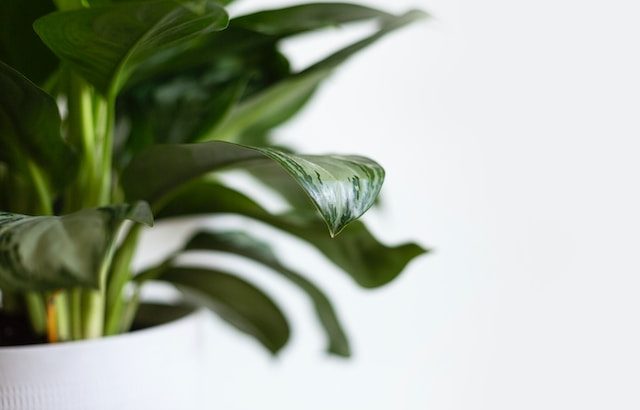We all know houseplants play a big role in making our indoor spaces feel comfortable and inviting. But did you know plants can also help improve indoor air quality? It’s true. Plants can help remove harmful chemicals from indoor air. Here’s a list of 15 common houseplants that can purify indoor air.
1. English Ivy
This hearty vine’s dense leaves absorb formaldehyde, a prevalent indoor pollutant that can be found in some glues, wood floorboard resins, synthetic carpet dyes, and pressed wood products including cabinetry, plywood paneling, and furniture.
2. Peace Lily
The white-flowered Peace Lily is good for ridding the air of benzene, a carcinogenic VOC found in paints, furniture wax, and polishes. The Peace Lily will also absorb acetone emitted by electronics, adhesives and certain cleaners. But take care if you have dogs and cats that like to nibble your plants, Peace Lilies are poisonous to pets.
3. Lady Palm
This easy-growing tree-like species helps clear the air of ammonia, a major ingredient in many cleaners, textiles and dyes that can be harmful to the respiratory system.
4. Boston Fern
One of the most efficient air purifiers, the Boston fern is great at removing formaldehyde from the air, which, as previously mentioned, is a prevalent indoor pollutant. Some studies show it can also remove toxic metals like mercury and arsenic from soil.
5. Snake Plant
The sharp-leafed Snake plant absorbs carbon dioxide and releases oxygen at night (a reversal of the process most plants undergo), so they’re great for keeping in the bedroom for a slight nighttime oxygen boost. Also, in addition to helping lower carbon dioxide, Snake plants help rid the air of formaldehyde and benzene.
6. Golden Pothos
Like many other vines, the Golden Pothos combats formaldehyde, but this one also targets carbon monoxide and benzene. Golden Pothos often works well in a mudroom or entryway, where car exhaust fumes are most likely to sneak indoors.
7. Wax Begonia
Known for clusters of white, pink, or red flowers during the summer, the wax begonia is a powerhouse when it comes to filtering benzene and chemicals produced by toluene, a liquid found in some waxes and adhesives.
8. Red-Edged Dracaena
The red-trimmed leaves of this slow-growing shrub will take care of gases released by xylene, trichloroethylene, and formaldehyde, which can be introduced by lacquers, varnishes, and sealers.
9. Spider Plant
The easy-to-care-for spider plant’s long, grassy leaves and hanging stems go to battle against benzene, formaldehyde, carbon monoxide and xylene, a solvent used in the leather, rubber and printing industries.
10. Aloe Vera
An easy-to-grow, sun-loving succulent, Aloe Vera helps clear the air of formaldehyde and benzene, which can be a byproduct of chemical-based cleaners, paints and more. And, as an added bonus, the gel inside an aloe plant can help heal cuts and burns.
11. Gerber Daisy
This bright, flowering plant needs a lot of light, but is quite effective at removing trichloroethylene, which can be associated with dry cleaning and brought into the home with your dry cleaned clothing. Gerber daisies are also good for filtering out benzene.
12. Weeping Fig (Ficus)
A ficus in your living room can help filter out pollutants that typically accompany carpeting and furniture such as formaldehyde, benzene and trichloroethylene. Caring for a ficus can be tricky, but once you get the watering and light conditions right, they last a long time.
13. Chinese Evergreen
This easy-to-care-for plant can help filter out a variety of air pollutants, and it removes even more toxins as time goes on. Chinese Evergreens also do great in low light, producing blooms and red berries.
14. Bamboo Palm
Also known as the reed palm, this small palm thrives in shady indoor spaces and often produces flowers and small berries. The Bamboo palm is great at filtering out both benzene and trichloroethylene. It’s also a good choice for placing around furniture that could be off-gassing formaldehyde.
15. Heart leaf philodendron
This climbing vine plant is toxic when eaten – so make sure it’s not accessible to children or pets, but it’s a workhorse when it comes to removing all kinds of VOCs, particularly formaldehyde from sources like particleboard.
Now you have a list of 15 plants that not only beautify your home, they improve your indoor air quality. Try adding a few of these hearty houseplants to your indoor décor and start breathing easier.
